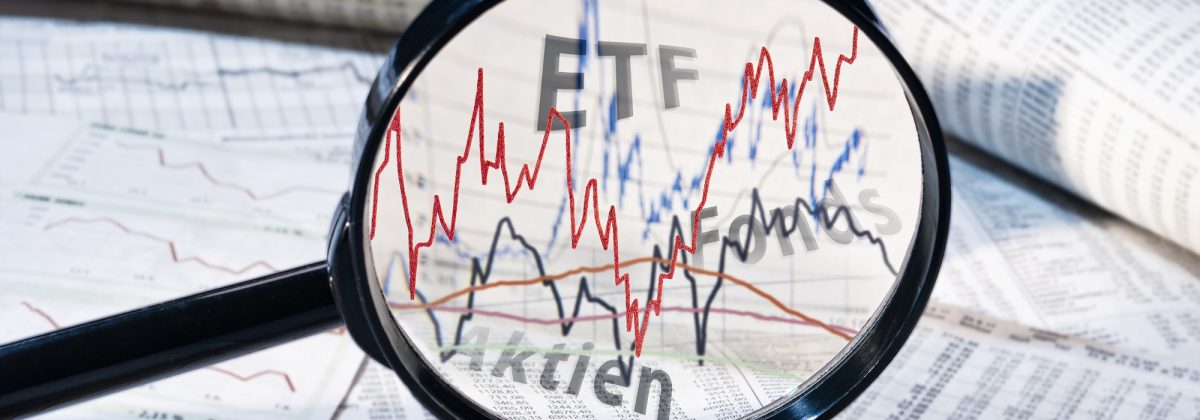Understand ETFs and Discover the Most Popular Ones of 2019

Exchange Traded Funds or ETFs are one of the most popular financial investments found in the markets today. They offer investors the ability to diversify over an entire industry or market segment with a single investment. They have become important investment vehicles for both individual and institutional investors, especially over the past 2 decades.
A Brief History of Exchange Traded Funds
Trusts and closed-end funds have always been present in the financial markets, through which investors can participate in a particular industry. The origin of modern ETFs can be traced back to 1989, when the S&P500-connected Index Participation Shares were launched. A few years later, State Street Global Investors launched the S&P500 Trust ETF, also known as SPDR or “spider.” This remains one of the most actively traded ETFs, with approximately $292 billion in assets under management (AUM).
In 2018, ETFs took in $310 billion worth of cash investments, the second highest in the past 12 years. It is one of the fastest growing asset classes, and its independent treatment from stocks by investors will remain one of the top market structure trends for 2019.
What are ETFs and How Do They Work?
ETFs are investment funds traded on stock exchanges, just like stocks. These marketable securities consist of assets, such as stocks, commodities, bonds, currencies and gold bars, and most of them track an index, like a stock index or bond index. The ownership is generally divided in the form of shares, although structures vary according to country-specific laws.
In many ways, they are much like mutual funds, except for the fact that shares in an ETF can be bought and sold throughout the day, through broker-dealers on stock exchanges. Another critical point of difference is that individual shares in ETFs cannot be sold or redeemed at Net Asset Value (NAV). It is the financial institutions that purchase and redeem shares in large blocks, also referred to as “creation units.”
Typically, an ETF will try to produce returns that track or replicate a high-value stock index or commodity index. Traders must remember that ETFs do not attempt to outperform an index, although leveraged ETFs are different. They allow investors to diversify their money, without owning any commodities directly or relying too much on an individual stock or bond. An S&P 500 ETF would own all 500 stocks on the index in the same proportion, increasing exposure to diverse asset classes in a single investment.
It is possible to buy ETFs on margin and even sell them short, just like common stocks. Brokerage standard commission rules apply here. But, unlike many mutual funds, they do not require minimum investments to start. The cost of one share would be the minimum one can go.
If there is strong demand for an ETF, the share prices will temporarily rise above the NAV per share, which gives an incentive to arbitrageurs to purchase additional creation units and sell the component shares in the open market.
The major advantages of ETFs include:
- Lower Cost than Other Investment Products: Since most ETFs are not actively managed and shielded from the cost of buying and selling securities, they are lower cost investment options.
- Transparency: They are transparent portfolios that are frequently priced at regular intervals throughout the day, for everyone to see.
- Tax Benefits: They do not involve selling securities to meet shareholder redemptions. They typically have low turnover of portfolio securities, which attracts relatively low capital gains tax.
- Flexibility: They can be bought and sold at current market prices, throughout the day.
- Increased Diversification: They provide exposure to diverse markets, including broad-based indices, industry and country-specific indices, bonds, commodities, currencies and more.
Nowadays, there are leveraged ETFs and inverse ETFs, which carry a certain degree of risk for investors. The former uses leverage or derivatives securities to amplify the index’s daily performance. Inverse ETFs seek to offer the opposite return of an index. These are usually tools for professional and institutional investors, not individuals seeking long-term investments.
Promising ETFs to Look Out For in 2019
Let us take a look at some well-performing ETFs to consider for 2019.
1. ETFMG Alternative Harvest (NYSEMKT: MJ)
One of the top ETFs so far in 2019, this one has over US$765 million in AUM and a 24% YTD return, as of January 2019. With the opening of the Canadian recreational marijuana market, there has been a rise in consumer demand. The ETF invests in dozens of promising cannabis companies. With the legalisation of hemp and hemp-based products in the US, global sales of cannabis are expected to grow nearly 40% in 2019.
2. VanEck Vectors Oil Services (NYSEMKT: OIH)
With US$1.16 billion in AUM, this one had 23% YTD return, as of January 2019. While there was a plunge in global energy prices in 2018, investors are considering 2019 to be a better year for this sector. West Texas Intermediate prices are doing well and global oil prices are soaring.
3. SPDR S&P Oil & Gas Exploration & Production (NYSEMKT: XOP)
With US$2.27 billion in AUM, this ETF has benefited from the rise in value of two global oil-field exploration giants, Schlumberger and Halliburton. The asset had 19% YTD return, as of January 2019.
4. Vanguard Total Stock Market ETF (NYSEMKT: VTI)
This one offers exposure to the total US stock market, comprising of 3,500 stocks, from Apple to small-cap stocks. This is a passively managed index fund and incredibly cheap to access.
5. SPDR S&P Biotech ETF (XBI)
The biotech industry is looking bright in 2019. Healthcare is one of the most dynamic US industries, with fast growing start-ups developing next generation Alzheimer’s drugs, cancer cures and surgery tools. It is, however, a riskier profile because it hosts some development-phase companies that are purely focused on research, rather than revenue generation. It is nevertheless one of the popular sector-focused stocks.
Today, there are more than 5,000 ETFs present across the world, each of them offering benefits that suit personal investment goals. Investors have more options and low-fee structures to choose from. However, investments should always be based on proper research of the related industry, including past-year performance, country-specific economic indicators and sector analysis.
Reference Links
- https://www.bloomberg.com/news/articles/2019-01-02/-etfs-as-asset-class-is-among-the-top-2019-trends-in-markets
- https://en.wikipedia.org/wiki/Exchange-traded_fund
- https://www.fool.com/knowledge-center/what-are-exchange-traded-funds.aspx
- https://www.fool.com/investing/2019/01/22/the-3-top-etfs-so-far-in-2019.aspx
- https://money.usnews.com/investing/funds/slideshows/best-etfs-to-buy




